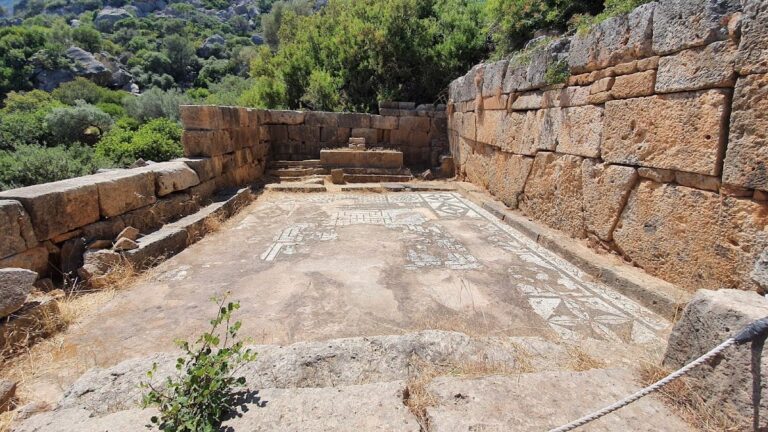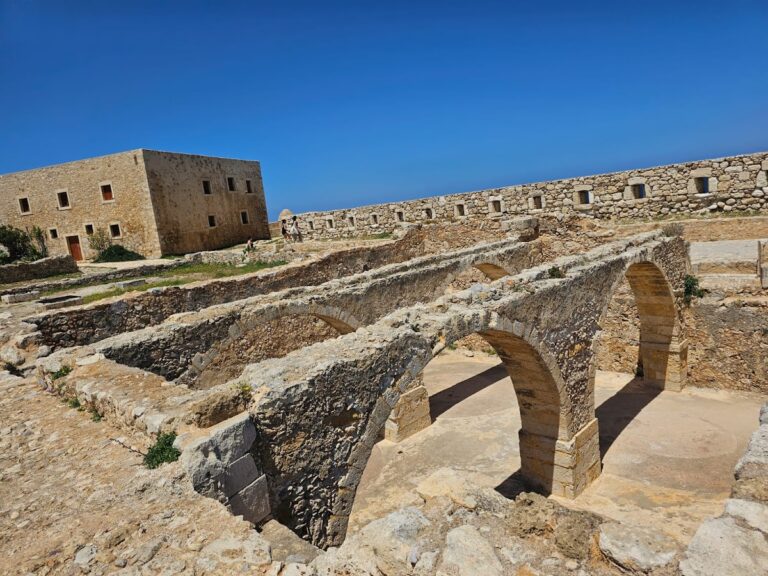Castle of Paleochora: A Venetian and Ottoman Fortress in Crete, Greece
Visitor Information
Google Rating: 4.4
Popularity: Low
Google Maps: View on Google Maps
Country: Greece
Civilization: Byzantine, Ottoman
Remains: Military
History
The Castle of Paleochora is located near the village of Paleochora in the municipality of Selino, Greece. It was originally built by the Venetians during their control of Crete in the late 13th century. Construction of the castle began in 1282 under the direction of Marino Gradenigo, the Venetian governor tasked with overseeing the southern coast of the island. The fortress aimed to secure maritime routes toward North Africa and to protect this part of Crete from piracy and rival powers. At the time, it was the sole defensive stronghold in the area and lent its name to the surrounding region—a name derived from the celery plants (selinon in Greek) that grew nearby.
In 1332, the castle became the center of a local uprising when Cretan rebels led by Várdas Kallérgis seized it. During this event, the Venetian commander Ermólaos Velénios and members of his family were killed. The Venetians regained control two years later, in 1334, restoring their authority over the southern coastline.
The fortress changed hands again in the mid-16th century when the famed Ottoman corsair Khayr ad-Din Barbarossa captured it in 1539. Following this capture, the castle’s strategic importance declined, and it was used less frequently. Recognizing the need for renewed defenses, the Venetians undertook restoration work between 1595 and 1596 under the supervision of Benetto Dolfin.
The conflict between the Venetian and Ottoman forces continued into the 17th century. In 1653 the Ottoman army besieged and took the castle, dismantling much of its fortifications. However, the Ottomans later rebuilt and adapted the fortress for their own use. By the 19th century, they had converted it into a watchtower, carrying out renovations in 1867 to suit this new function.
Today, the castle stands as ruins, primarily preserving structures dating from the Ottoman era, reflecting the layered history of occupation and strategic adaptation over nearly six centuries.
Remains
The Castle of Paleochora occupies a rocky promontory approximately 20 meters above sea level, positioned near the southwestern edge of the modern village. Its overall shape is roughly square or rectangular, a form typical of medieval military architecture designed to maximize defensive capabilities on uneven terrain.
Within the enclosure, the castle once featured a complex of essential facilities. There were buildings to accommodate the garrison, including barracks where soldiers lived, as well as water storage installations vital for withstanding sieges. A small church was part of the compound, reflecting the religious life within the castle walls.
Three towers complemented the fortifications: two stood along the southern walls and one on the northern side. These provided vantage points for surveillance and defense, helping control the surrounding sea routes and land approaches.
Most of the surviving ruins today come from the Ottoman reconstruction phase rather than the original Venetian construction. Among the remains are fragments of two towers, whose masonry and design echo their later use as watchtowers rather than medieval castles. These remnants offer a glimpse into the fortress’ adaptation under Ottoman rule, including the partial reuse of earlier walls and foundations.
While the castle no longer retains its full structural integrity, the layout of the walls and the scattered architectural elements allow a clear understanding of the site’s former role as a coastal stronghold. No detailed decorations such as mosaics or inscriptions survive in situ, and the visible remains primarily emphasize the practical military character of the fortress throughout its active history.






